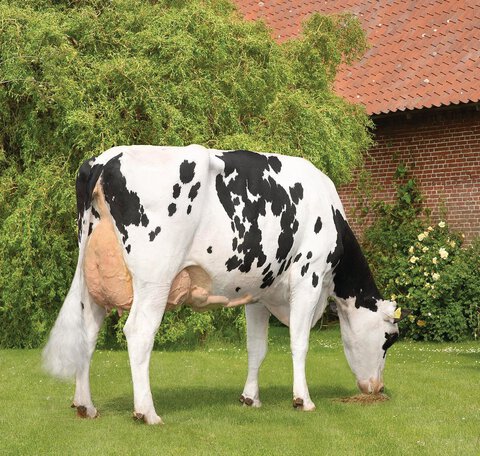The 7-year-long research into methane emissions in Denmark has collected over 26,000 CH4 breath records from 647 Holstein cows. Data has confirmed that there is a substantial variation in the population.
Methane intensity (methane per kg of milk produced) ranges from 1.9 to 29.5 g CH4 per kg of ECM milk produced, with the average at 9.2.
Also for the methane yield (methane per amount of feed consumed), there is a great variation between the animals, ranging from 3.7 to 35.8 g CH4 per kg of DMI with the average at 15.4.
How can breeding help achieve the desired methane emissions faster?
The Danish study has evaluated three different scenarios for developing the selection index:
- Scenario 0 – only selecting for Energy corrected milk (ECM)
- Scenario 1 – include residual feed intake
- Scenario 2 – include residual feed intake and methane
The selection index, which includes both residual feed intake and methane, would allow a significant reduction in residual feed intake and residual methane production to be achieved without a major loss in Energy corrected milk production.





